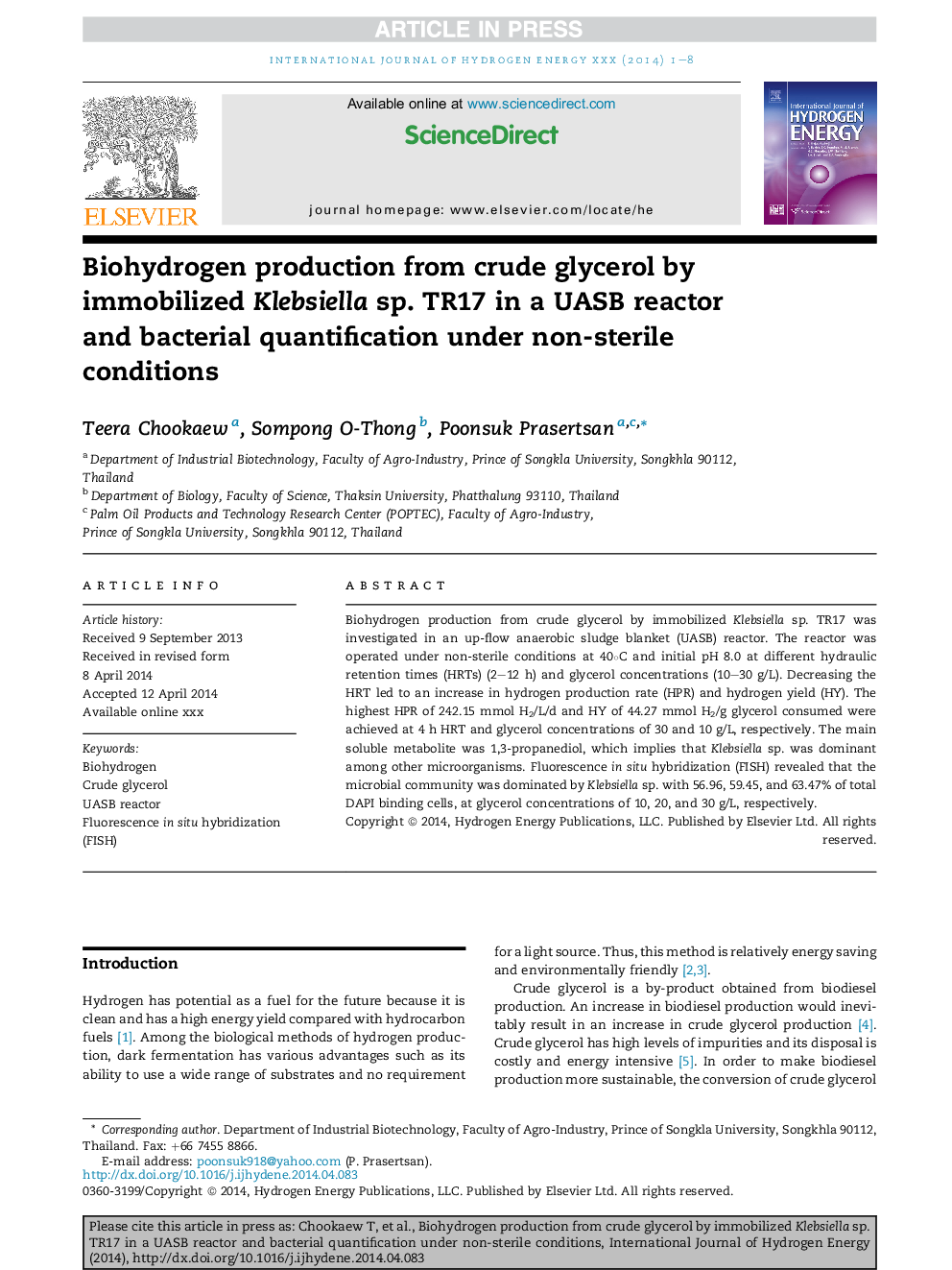| Article ID | Journal | Published Year | Pages | File Type |
|---|---|---|---|---|
| 7718913 | International Journal of Hydrogen Energy | 2014 | 8 Pages |
Abstract
Biohydrogen production from crude glycerol by immobilized Klebsiella sp. TR17 was investigated in an up-flow anaerobic sludge blanket (UASB) reactor. The reactor was operated under non-sterile conditions at 40âC and initial pH 8.0 at different hydraulic retention times (HRTs) (2-12Â h) and glycerol concentrations (10-30Â g/L). Decreasing the HRT led to an increase in hydrogen production rate (HPR) and hydrogen yield (HY). The highest HPR of 242.15Â mmol H2/L/d and HY of 44.27Â mmol H2/g glycerol consumed were achieved at 4Â h HRT and glycerol concentrations of 30 and 10Â g/L, respectively. The main soluble metabolite was 1,3-propanediol, which implies that Klebsiella sp. was dominant among other microorganisms. Fluorescence in situ hybridization (FISH) revealed that the microbial community was dominated by Klebsiella sp. with 56.96, 59.45, and 63.47% of total DAPI binding cells, at glycerol concentrations of 10, 20, and 30Â g/L, respectively.
Related Topics
Physical Sciences and Engineering
Chemistry
Electrochemistry
Authors
Teera Chookaew, Sompong O-Thong, Poonsuk Prasertsan,
